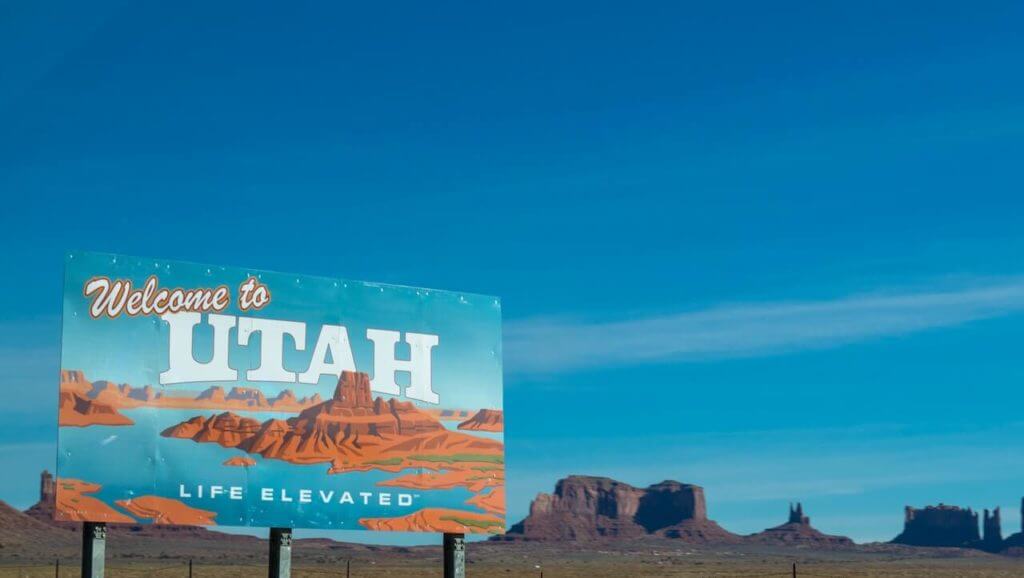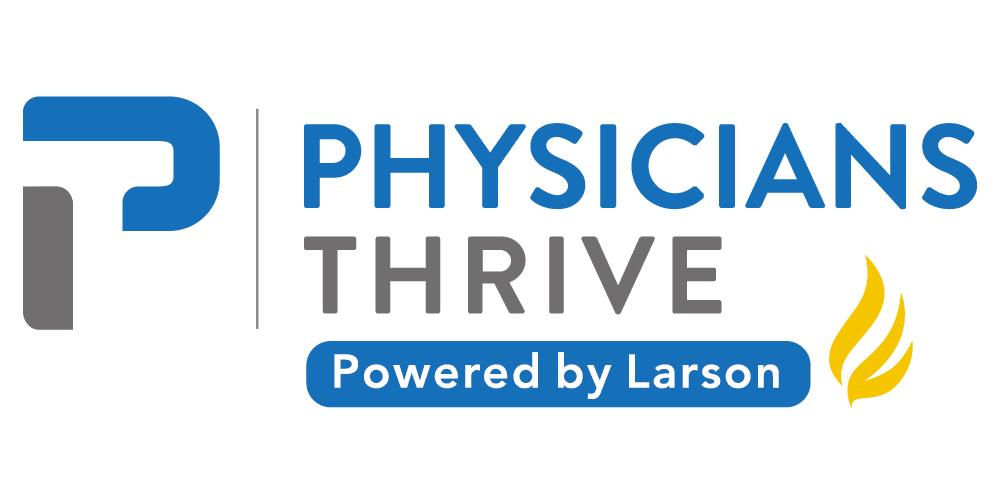In the last decade, you’ve converted your passion for helping others into one of the most respectable career paths in the world.
So far, you’ve:
- Completed a pre-med undergraduate program
- Survived four grueling years of medical school
- Proven your skills in a two-year progressive residency program
- Put your USMLE or COMLEX exams in the rearview
Now, there’s only one barrier between you and a Utah medical license:
The application.
Plus a few fees, deadlines, and documents to tie up a couple of loose ends.
A Utah medical license comes with a hefty price tag — $670 on the “low end.”
However, if you follow this guide and take note of our insider tips, you could have your license to practice medicine in as little as two weeks!
Now, are you ready to start the next chapter in your life and career?
Let’s review how to get your physician Utah medical license with the Division of Occupational and Professional Licensing (DOPL).
Table of Contents
Before Applying …
You’re finally in the long-awaited application phase and just one step away from earning your Utah medical license.
But the written application itself is still weeks away.
Before you download the PDF or sign-in to the portal, complete these three steps:
Step 1: Submit an FCVS Report
Moreover, with mounds of paperwork per applicant and short-staffed medical boards, states like Utah are eyeing efficiency wherever possible.
Including the credentialing process.
Rather than uploading your USMLE transcript or residency proof to the Utah licensing board directly for your Utah medical license, you’ll:
- Create an account with the FSMB (Federation of State Medical Boards).
- Upload all required documents (i.e., birth certificate, diploma, exam scores).
- Select “Utah” as the board receiving your FCVS packet.
- Await an email notifying you that the board received your data.
The $375 profile fee amounts to around half of your total application costs.
But not having to rely on snail mail or individually send a dozen documents is certainly an upside.
What Documents Do You Have to Upload or Forward to FCVS?
Though FCVS takes some of the legwork out of proving your candidacy, there are strict guidelines.
Moreover, your packet isn’t complete without:
- Proper identification (birth certificate or passport)
- Name change documents (if applicable)
- A current passport-style photo (must be notarized)
- Medical school e-transcript
- Medical school e-diploma
- Verification of medical education (to be completed by your dean)
- Proof of postgraduate training
- Licensure exam transcripts (ordered and forward to the FSMB)
- ECFMG status report (for foreign applicants)
For integrity’s sake, the FSMB does not accept copies of documents sent directly from you, the applicant.
Step 2: Create an AMA Profile
The Utah Medical Board is a rarity in at least one sense:
Accordingly, the board requires all physician applicants to undergo another credentialing layer by creating an AMA (American Medical Association) profile.
The AMA profile verifies medical credentials, like your:
- Chosen healthcare specialty and board certifications
- Current and past NPI data
- Medical school and postgraduate training details
- Past and current medical licenses
- DEA numbers
Here’s a sample AMA profile to help you envision the path ahead; it looks like a fluff-free physician resume that’s easy to scan!
Step 3: Request an NPDB Report
In the last step of the vetting process, you’ll forward an NPDB (National Practitioner Data Bank) Self-Query Report to the Utah board.
Additionally, this $4 document could reveal some not-so-glamorous details about your past medical experience, like:
- Malpractice suits and payouts
- Reportable disciplinary actions and violations
- License revocations
- Medicare or Medicaid exclusions
Therefore, the entire purpose of the Self-Query is to compare your responses to what’s already in the NPDB database.
In other words, don’t attempt to cheat the system — be honest!
Utah Physician Licensing Requirements
Accordingly, all states have unique requirements for up-and-coming physicians, and Utah is undoubtedly no exception.
To be eligible for a Utah medical license in the Beehive State, requirements include:
- A Doctor of Medicine (M.D.) from a school with LCME accreditation (or an ECFMG for foreign applicants)
- Completion of a 24-month progressive residency program approved by the ACGME, RCPSC, or CFPC (or 12 months plus current enrollment in a Utah-based residency training program)
- Passed examinations with a 75% or higher within three attempts (USMLE, FLEX, NBME, LMCC, or a combination of these exams detailed here)
- Be able to write, read, and speak English coherently
On rare occasions, the Utah Medical Board might ask applicants to be present for an in-person Board meeting.
See also: How Long-Term Disability Insurance Can Protect Visa and Green Card Holders
Completing the Application
With these three prerequisites officially out of the way, you’re finally ready to begin penning your application.
Now, here’s the rookie’s guide to completing the Utah medical license application:
Print vs. Online?
There are two application methods available when applying for Utah licensure:
- Online: Fill out your application via the official DOPL (Division of Occupational and Professional Licensing) portal.
- Paper: Print, complete, and mail your four-page application to the DOPL.
When in doubt, choose online.
The online version catches careless mistakes, like misspellings and accidentally skipped fields (which further delays a board response).
It also dodges common physical document errors, like an incorrect mailing address or illegible handwriting.
What’s On the Application?
Thanks to the rigorous credentialing steps completed earlier in the process, Utah’s application is far less repetitive than other states.
Your documents speak for themselves — as they should!
This very brief four-page PDF has just ten sections:
Applicant Information
No research required!
Simply provide necessary identifying information, like your legal name, phone number, driver’s license number, and social security number.
Affidavit and Release
The affidavit and release are standard for nearly all applications.
By signing and dating the form, you’re promising that your application is 100% accurate and you’re qualified to become a physician.
Qualifying Questionnaire
Get ready for the quizzing of a lifetime!
These 12 yes/no questions may be the deciding factor in an application approval, asking about potentially disqualifying factors like:
- Past drug and alcohol abuse
- Previous discipline, suspensions, or revocations
- Any blips on your criminal record (including misdemeanors)
Any “yes” response requires a detailed explanation, such as related police reports, court documents, or personal descriptions.
Professional Licenses
If you’re a veteran physician elsewhere, use this section to detail your current and past licenses, dates held, and license numbers.
Medical Qualifying Questionnaire
These five yes/no questions put your medical experience under a microscope, quizzing you on everything from pending actions to malpractice suits.
Similar to the more general Qualifying Questionnaire section, any “yes” answers require further explanation and details.
Designation of Contact Person For Access to Medical Records
Supply the Utah Medical Board with two references who have access to your physician’s medical records.
FCVS
Releasing your FCVS report to the board was step one in the application process, and hopefully, you didn’t bypass that requirement!
This two-field section asks about when the FSMB delivered that notification email.
Optional Sections
Depending on your chosen specialty, postgraduate training, and licensure in other states, you may also face three “optional” sections while completing your app:
- Utah Controlled Substance Affidavit: Only required if your specialty involves prescribing controlled substances
- Affidavit of Utah Residency: Specifically for applicants with 12+ months of a progressive residency program but less than the mandatory 24 months
- Temporary License: For physicians eyeing immediate approval (the board requires a current license and an invitation to practice in Utah)
Related: How to Get Your Medical License
Sending Supporting Documents

Now, by this stage, you’re putting the finishing touches on what’s left of your Utah medical license application.
Furthermore, here are the final roadblocks you’ll traverse before crossing the finish line:
Completing Extra Forms
In addition to the written (or online) application, Utah may require you to complete:
- Utah Controlled Substance Form: Any specialty or profession prescribing controlled substances (i.e., osteopathic physicians, surgeons, optometrists); the board requires DEA registration for all applicants.
- Verification of Employment Form: Submit one separate form for each medical facility where you perform at least one-quarter of your practice.
- Application for Interstate Medical Compact Privileges (IMLC): Hold a physician license in any of the 28 participating states; slashes application fees; beneficial if you live along Utah’s state borders.
Additionally, if you have questions about which forms match your specialty and ideal privileges, call DOPL at (801) 530-6628 or visit dopl.utah.gov.
Where to Send Your Supporting Docs & Forms
Express Delivery (or In-Person Drop-Offs):
Division of Occupational and Professional Licensing
Heber M Wells Building, 1st Floor Lobby
160 E 300 S Salt Lake City, UT 84111
USPS Snail Mail:
Division of Occupational and Professional Licensing
PO BOX 146741
Salt Lake City, UT 84114-6741
An Up-to-Date Criminal History
Before receiving your Utah medical license, the final step is revealing a crisp, clean criminal record — at least to an extent!
While completing the Application for Criminal History Determination, be sure to:
- First, complete pages one and two, detailing how far into the application process you are currently.
- Second, print out and complete a copy of page three for all pleas, convictions, charges, and arrests (not including minor traffic stops or juvenile charges).
- Lastly, attach police, court, and personal records describing the events in-depth (including any firearm limitations imposed upon you).
Then, the board will respond within 30 days to let you know whether your criminal past (or lack thereof) makes you ineligible to hold a Utah medical license.
Why the Charges Matter
Furthermore, over 70 million Americans reportedly have criminal records, but a retail theft charge in your 20s doesn’t necessarily disqualify you from becoming a doctor!
Some charges yield automatic denials, like human trafficking and kidnapping.
Others may require additional manager review or board interview, depending on the charge and how long ago it took place.
For example:
- Fishing without a license won’t interfere with your medical license at all.
- Stalking requires a review if it happened within the last five years.
- And ten years after a first-degree felony, a medical license might be one interview away.
Additionally, you can refer to these guidelines to learn about how your criminal record may (or may not) impede the licensing process.
The Costs of a Utah Medical License

Therefore, a Utah medical license won’t necessarily add to your mounting student debt. Nonetheless, it’ll be the last financial setback before becoming a physician.
Next, whip out your checkbook or Visa, and get ready to pay:
- A $200 application fee (made out to the DOPL)
- A $41 AMA profile fee
- A $375 FCVS profile fee (with extra costs if applying to multiple State Boards)
- A $4 NPDB Self-Query fee
- A $100 controlled substance license (if needed)
- A $50 criminal record processing fee
Without including unrelated fees (ECFMG certificate, test scores, or a temporary license), expect to shell out $670-$770 to get your Utah medical license.
You may also like: Your Full Guide to Physician Compensation
The Approximate Licensure Timeline
The Utah Medical Board suggests a 10- to 15-day wait on all approvals and rejections.
Nonetheless, responses could take up to 8-12 weeks if you:
- Wait until after you’ve begun applying to sign-up for FCVS.
- Submit your application at peak times (post-residency).
- Opt for the handwritten paper application instead of the online version.
- Leave sections of your application either blank or incomplete.
- Require Board meeting attendance, which may be monthly or quarterly.
Conclusion
An 8-12 week wait for your Utah medical license is just a drop in the bucket compared to medical school and residency programs.
However, with our three tips, you’ll be a Utah medical license holder by month’s end:
- Submit your criminal record and gather all supporting documents before sending in your application.
- Create FCVS and AMA profiles well-in-advance to prevent a possible six-week delay for approval.
- Pursue temporary licensure (an extra $50) to begin practicing sooner, assuming you hold a medical license elsewhere.
Contact Physicians Thrive now if you’re interested in learning about how to secure your financial future as a medical professional.
Want to get your medical license in another state? We have guides on how to get licensed by the:
Arizona Medical Board | California Medical Board | Colorado Medical Board | Maryland Medical Board | New Mexico Medical Board
Subscribe to our email newsletter for expert tips about finances, insurance, employment contracts, and more!








































